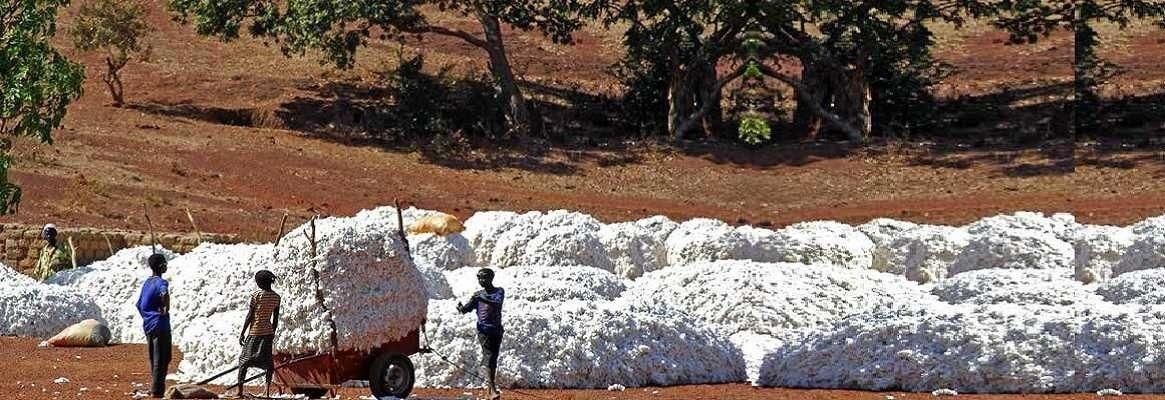African cotton, beyond Egypt, is hardly ever talked about. Efforts are under way in many African nations to overcome the problems holding the sector back.
Countries around the world pay top dollar for cotton, a crop essentially produced for its fibre, which is the major raw material in the textiles industry.
In 2019, 18.6 per cent of all imported cotton worldwide ended up in China, the largest exporter of textiles and clothing products in the world. The country paid $9.2 billion for the resource used in an industry responsible for more than 8 million jobs. Bangladesh took up 10.9 per cent of total imported cotton at $5.4 billion. In fact, none of the top 10 countries that purchased the highest dollar value worth of imported cotton during 2019 paid less than $1 billion for the crop famously called the white gold. Yet, total demand for cotton is expected to reach 28.3 Mt in 2025.
This growth is driven by economic and population growth, and presents an opportunity for Africa, where cotton producers have not been living up to their potential.
Cotton in Africa
Africa contributes about 8 per cent of the world's total cotton production, most of which is produced by smallholder farmers using crop rotation, unlike other regions where cotton is grown on largescale plantations. Cotton is native to subtropical and tropical regions of the world, including Africa where the greatest diversity of wild cotton species is found.

Hence, it flourishes in Africa, so much that in 2010 Nigeria was the 12th largest cotton producer in the world with a total production capacity of 602,440 metric tonnes, according to a report by the Financial Derivatives Company Limited (FDC), a business information, economic data, research and analysis company located in Lagos, Nigeria. According to FDC, low yields from poor cotton seeds and pest damage are two of the major challenges facing cotton cultivation in Nigeria.
A cotton farmer in the country Alhaji Salmanu Abdullahi had complained to Alliance for Science about spending so much on pest control that he worried if he would be able to make enough profit to cover his investment. Abdullahi's complaint is the story of several cotton farmers in Africa who struggle to recoup their investment.
Burkina Faso was the leading cotton producer in Francophone Africa from 2004-05 to 2010-11 and 2012-13 to 2016-17. But fall armyworms struck, extensively damaging the crop, leading to a significant decline in yield. Bollworms have always threatened cotton production in Burkina Faso, whose cotton fetched top prices because of its high-quality fibre, and farmers told Reuters in 2017 that the pest was difficult to control.
Abdullahi says his and the efforts of other farmers were futile, as they still harvested less than half a tonne per hectare. In countries like South Africa, where genetically modified insect-resistant seeds are used, farmers get up to 2 tonnes per hectare. It is the same reason why Burkina Faso adopted a genetically modified strain of cotton called Bollgard II as the solution, until it wasn't, and the government had to suspend its production.
Organic and Non-organic Boost
In recent years, Burkina Faso led cotton production in Francophone Africa; it was producing pest-resistant cotton. The country's researchers had tested Bollgard II cotton and confirmed its effectiveness against pests. The pest-resistant strain contains a bacterium, Bacillus thuringiensis (or Bt). But when it produced short fibres, Burkinabes asked Monsanto, the American agrochemical company that introduced Bollgard II to breed the gene into their own cotton.
They had hoped to get pest resistance along with quality long fibres, but things did not work out and in 2016, Burkinabes went back to their native cotton. Sadly, incomes have been hit and farmers are calling for the return of Bt cotton. When it was in use, farmers' income increased by an average of 51 per cent, pesticide use went down by up to 70 per cent and yield increased by 22 per cent.
Burkina Faso's situation seems to suggest that Bt cotton is the only way to cotton production growth in Africa, but the Republic of Benin defied this. By 2019, Benin had become the top cotton producer in West Africa, harvesting 732,000 tonnes of seed cotton, the country's highest ever. In its World Agricultural Supply and Demand Estimates (WASDE) report, the United States Department of Agriculture (USDA) forecast that Benin might top West African cotton production again in 2020.
Benin's yield growth came after the government and private sector invested in modernising the entire cotton supply chain and ensured farmers got seed and fertiliser inputs on time.

In Tanzania, the private sector led by two indigenous organisations Gatsby Africa and MeTL Group, is also getting more involved and has made the growth of the cotton sector a priority.
It's a bit different and maybe better in Nigeria where the government has gone full throttle on supporting the sector. The country's central bank said it spent more than N120 billion ($314 million) across the cotton, textile and garment (CTG) sector, financing more than 320,000 beneficiaries between 2016 and 2020. The results are expected early, with the output for seed cotton in 2020 projected to be over 300,000 metric tonnes. Close to 20 ginneries across the country have also been saved and more are expected back up before the end of 2020. This is expected to push the production capacity of ginneries to over 102,000 metric tonnes of cotton lint, enough to meet the cotton lint demand of the local textiles industry.
In a recent interview, the president of the National Cotton Association of Nigeria (NACOTAN), Anibe Achimugu said the intervention of the country's apex bank has helped the sector. According to him, the central bank brought in input suppliers such as mechanisation agents, fertiliser merchants and made improved seedlings-at least 40 kg each-available to farmers.
Achimugu, who is also the managing director of local cotton farming, ginning and trading company Arewa Cotton, said the central bank's intervention has led to improved yield per hectare, revival of ginneries, while the textiles and garment sector enjoys a guaranteed price that ensures they are able to pay back their loans and still make good profit.
Nigeria has averaged 235 bales since 2017 and will be hoping to build on this for future growth. The country had approved the commercialisation of Bt cotton in 2018, a strain that can produce 4.1-4.4 tonnes per hectare. Having learned from Burkina Faso, Nigeria has ensured its Bt cotton did not lose the "local flavour". Alex Akpa, acting director-general of Nigeria's National Biotechnology Development Agency (NABDA) confirmed this, stressing that the new varieties have viable seeds, can resist insect and pest infestation, survive drought and perennial flooding.
The renewed commitment to the sector holds a lot of promise for Nigeria, and if the current momentum is maintained, the country will be mulling exports in the next five years.
This article was first published in the December 2020 edition of the print magazine.









Comments